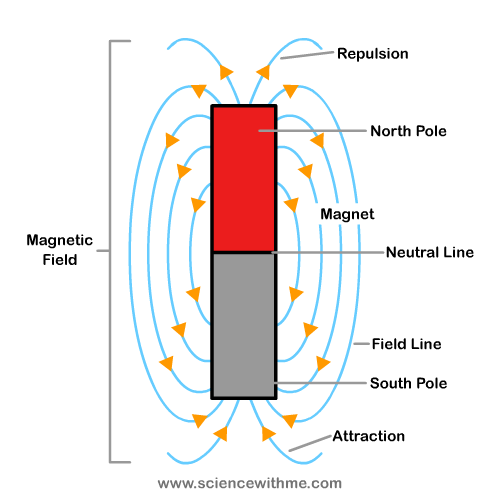Have you played with magnets before?
You might remember trying to make things stick together or move an object just by using a magnet. A magnet is an object that attracts or repels other objects within a magnetic field. Magnets can be permanent or temporary and vary in size, shape or in the strength of its magnetic field. Some magnets are more powerful than others. During olden times, people thought magnets were magical. Imagine being able to move an object without touching it! Children who discover magnets for the first time also get surprised by how magnets work. Magnets are easy to use and fun to play with, but are also used in nearly every utensil or tool that we have at home. At home, your mom doesn’t use glue or tape to stick notes to the refrigerator door; she uses little magnets to attach them. How cool is that?
How do magnets work?
What do magnets have that make objects stick to it? Magnets have an invisible field that forces other objects to react to its properties. This powerful force is called the magnetic field. Magnetic fields have particles called electrons that actively shift and move within the field. These electrons continuously revolve around the core of the magnet (its poles), creating energy that attracts objects. Because of this, magnets have the ability to draw objects towards itself. This ability is called magnetism, caused by the force field that magnets create through its electrons (negative charge) and protons (positive charge). If two magnets are close together, try figuring out which ends tend to meet. If you look closely, you’ll see that unlike poles attract each other, while identical poles repel each other. If you place the south pole of a magnet beside the north pole of another magnet, they will stick together. On the other hand, putting two magnets with both north poles facing each other will force them apart.

Which objects are attracted to magnets?
Magnets can attract all things made of iron. Objects that are made out of other metals like nickel can also stick to magnets, although non-metallic objects like glass, cloth and paper cannot be attracted to magnets. Do you know that you can also make temporary magnets out of everyday tools? Observe how dangling a permanent magnet on top of a bunch of iron nails automatically pulls the nails towards it. The invisible field exerts a pull on the nails to get attached to the magnet. Objects that are surrounded by a magnetic field can become magnetized for a time and be able to have other objects stick to it. If you attach a nail to a permanent magnet, the nail itself will be caught within the magnetic field and acts as a magnet itself, forcing other nails to attach to it. Sometimes, the magnetic field is too strong for it to disappear right away that an object can retain its magnetism long after it was magnetized. You can test this by running a permanent magnet over an iron bar or nail several times, then leave it be and see if it can attract other nails.
How do we use magnets in everyday life?
Magnets are everywhere! You may not see it or feel it, but nearly everything that works around you uses the magnetic field. When you close the refrigerator door, the way it sticks to the fridge is because of magnets. The microwave oven where you cook your popcorn, the electric fan you use to keep off the heat, even the computer - all use magnets to function! Magnets are even present in devices we use to enjoy music: without magnets, you wouldn’t be able to use your earphones or speakers. Magnets are also useful in medical equipment and electronics. Nearly all appliances that use motor engines use magnets to make them work. The Earth is actually a huge magnet. Can you believe it? Our planet has both North and South poles, which act within the Earth’s magnetic field. Similarly, all magnets have two poles: north and south. The magnetic fields are strongest at the poles, and the ends will point towards its poles. Try hanging a bar magnet in the air, and see how the north end of the magnet follows the direction towards the Earth’s North pole, and the south end of the magnet faces the South pole. This is why the compass that we bring and use during hiking uses a magnet to show us the way we need to go. Now that we have learned about magnets and magnetism, we can be aware of how valuable it is in our daily lives. Science helps us recognize how the world truly works, so if you wish to understand more about science just go to www.sciencewithme.com and browse our site.
